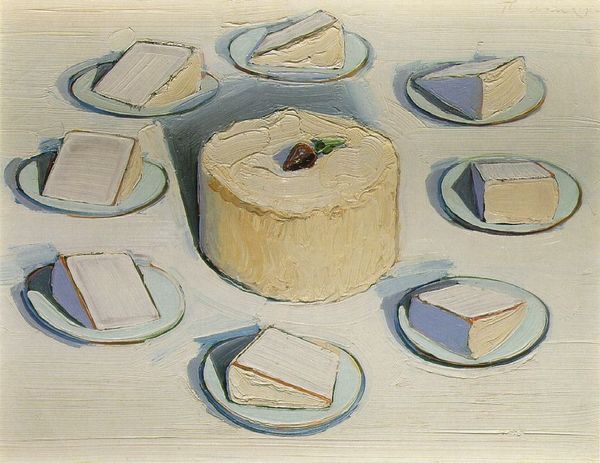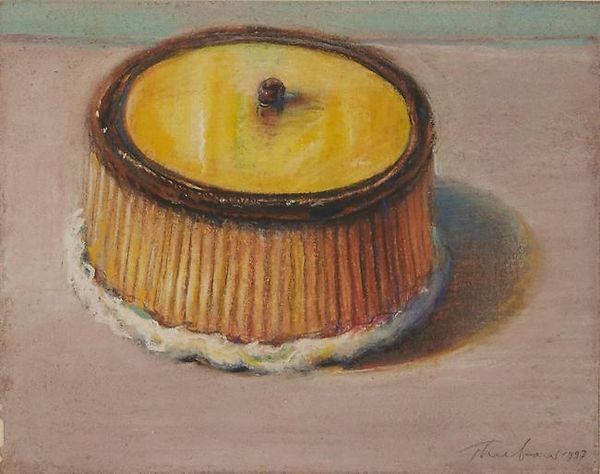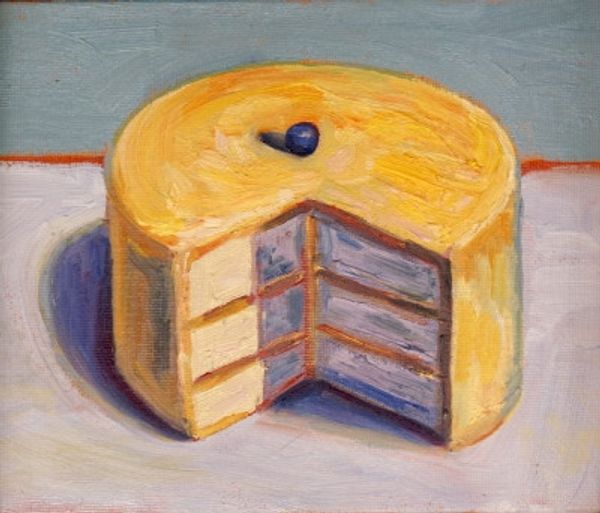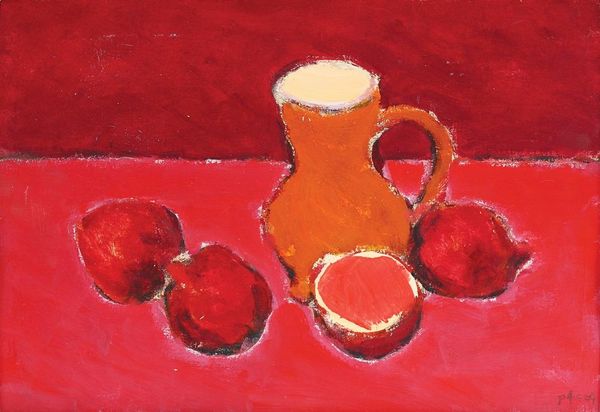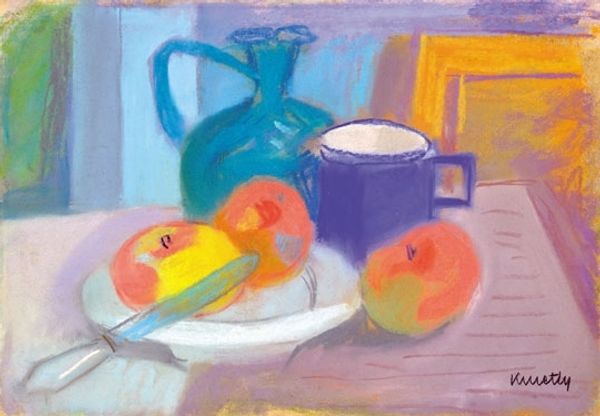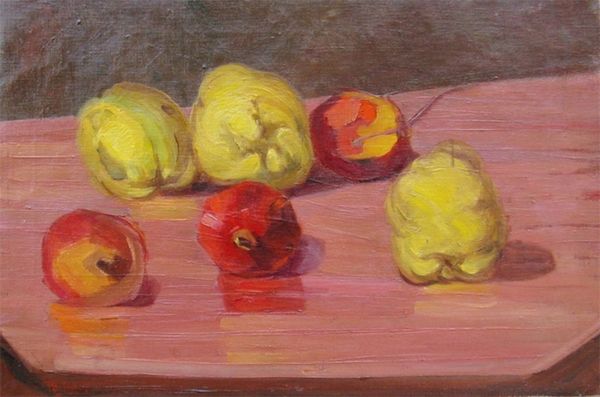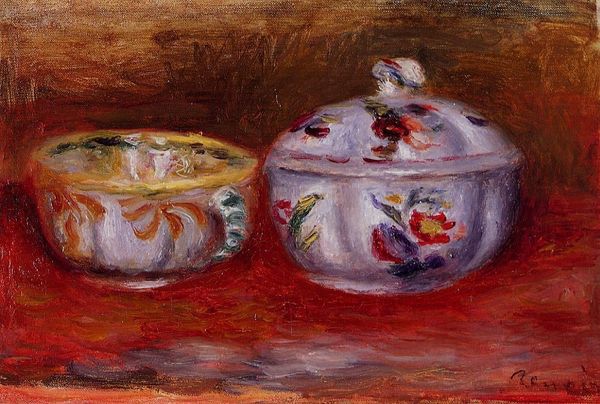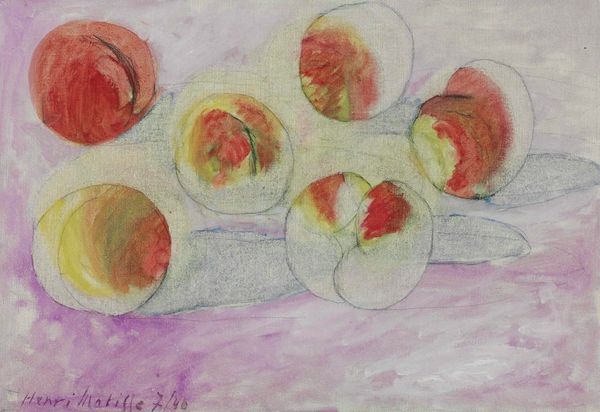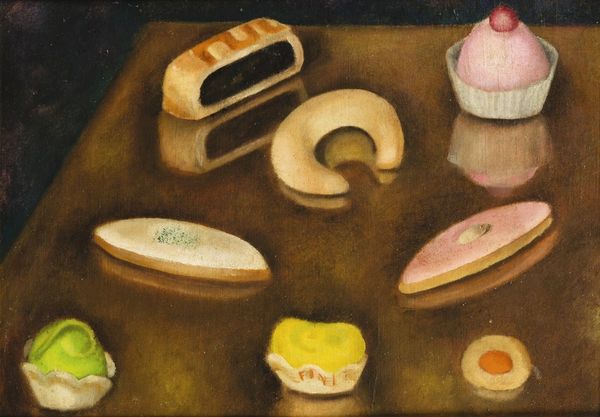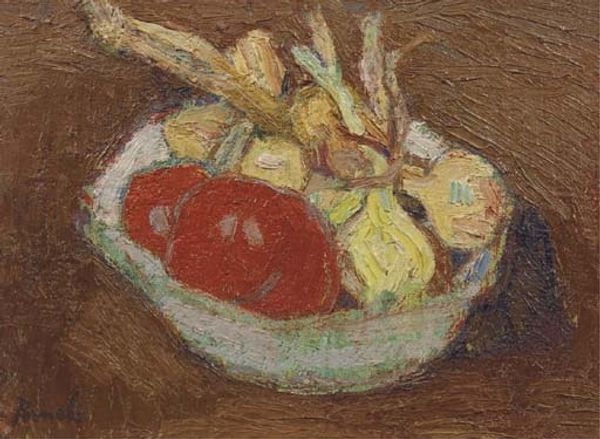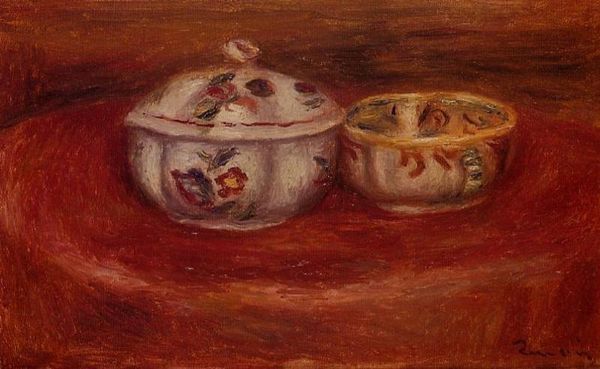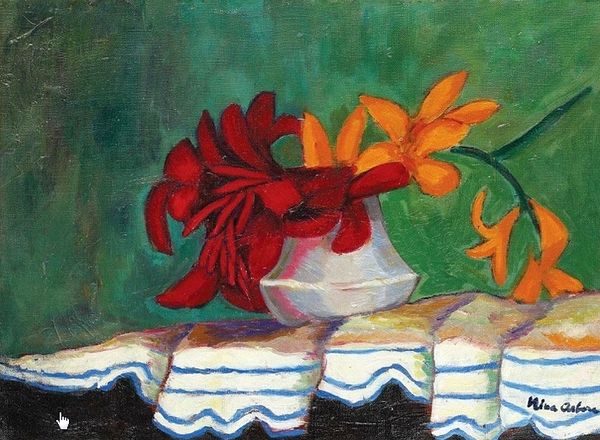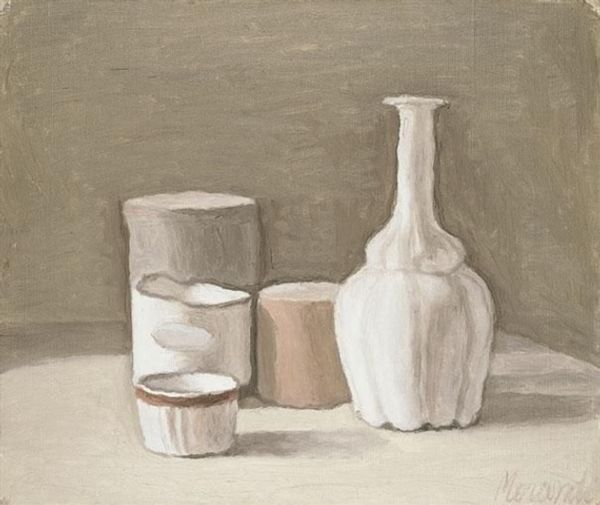
#
bay-area-figurative-movement
Copyright: Wayne Thiebaud,Fair Use
Curator: Let’s consider Wayne Thiebaud's “Four Cakes,” created in 1996. What’s your initial impression of the piece? Editor: The cakes feel both celebratory and somehow melancholic. Their shapes and colors evoke a feeling of nostalgia. There's a definite sweetness, but also a stillness. Curator: Thiebaud’s work is interesting in the way it plays with the promise of the American dream through depictions of consumer goods. It also interrogates labor, particularly within service industries. I'm wondering, what statements are made by focusing on these confections? Editor: I think that they serve as archetypes of idealized pleasure. Think about how circles frequently evoke completion, fulfillment. They almost mirror miniature mandalas. They invite the eye into a sort of symbolic meditative space. The cherry acts as an awakening! Curator: Precisely, because while each cake is subtly different in shape and color, the repetitive presentation flattens individuality. So, in relation to the politics of consumerism, this could reflect societal pressures toward uniformity, masking diversity under a veneer of choice. Editor: That also brings up ideas about class! Baked goods can be signifiers of celebration and social status. There is that sense of nostalgia tied to childhood memory—birthdays and treats as accessible luxuries and social markers. Each tier indicates another milestone of consumption... or another year passed. Curator: And within feminist discourse, consider how women have been historically tied to food preparation and domestic roles. His presentation could evoke reflections on labor, expectations, and the symbolism embedded in the simple act of baking. It's a space loaded with narratives about power and expectations! Editor: And visually, each layer or level also represents the many layers of symbol within symbol! Each a reminder that art imitates life... and imitates dessert. Curator: The work feels even more charged in light of historical disparities, like class struggle. Its sugary veneer only emphasizes inequalities and privileges baked into the societal recipe. Editor: I see how this pushes one to examine those complex symbolical links more critically. Those connections elevate the commonplace into a much richer reflection of culture and collective history. Curator: Right, its deceptive simplicity invites deep questions about desire, consumerism, labor and societal expectation. Editor: Indeed. Art is never simply art, nor a cake, simply a cake.
Comments
No comments
Be the first to comment and join the conversation on the ultimate creative platform.
